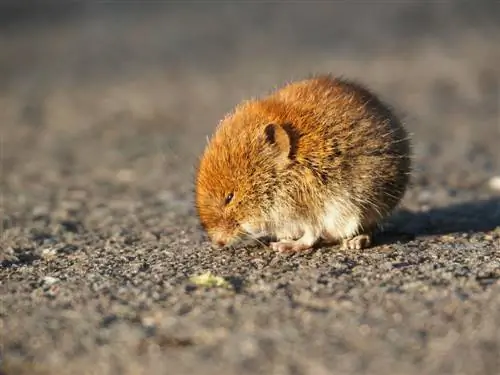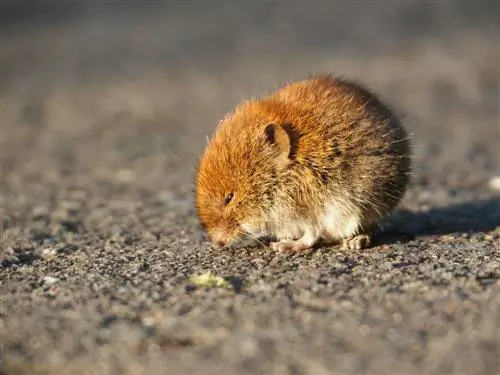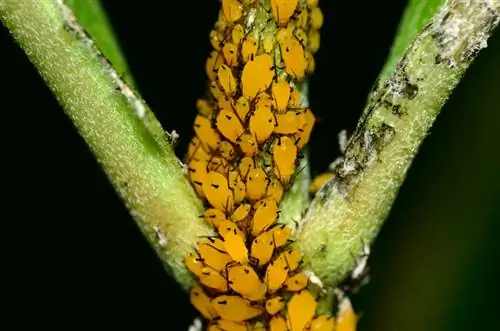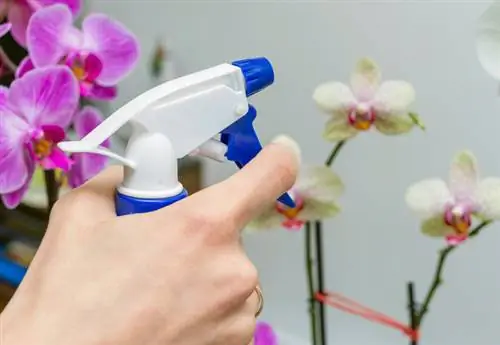- Author admin [email protected].
- Public 2023-12-16 16:46.
- Last modified 2025-01-23 11:22.
The garden soil is alive! But in addition to countless useful animals and microorganisms, there are also pests. They have no good plans for our plants, which unfortunately we often notice far too late. These are often found in the ground.

What pests are there in the garden soil and how can you combat them?
Different pests in garden soil include grubs, caterpillars, wireworms, black weevil larvae, tipula larvae and voles. They eat roots or vegetables, causing damage and sometimes loss of plants. Control options vary depending on the pest.
Grubs
The larvae of beetles are known as grubs. Not all of them are garden pests. However, garden leaf beetles, cockchafers and June beetles are among them. Their larvae look very similar:
- creamy white coloring
- curved posture
- about 3 cm long
- have six pairs of breastbones and a brown head
These larvae don't just cause damage to vegetables and flower beds. They also often damage green lawns, which suddenly show spots. Grubs can be controlled using predator-proof nematodes.
Caterpillars
Various species of moths provide caterpillars that live in the garden soil and can cause great damage to our plants.
- they are up to 5 cm long
- grey-brown or green
- curl up when touched
They eat thick-fleshed vegetables such as carrots, potatoes, celery or salads. They hardly leave any young specimens left. The use of nematodes does not bring resounding success. Search the soil around the eaten plants for them and collect them.
Tip
Further pests in the garden soil can be wireworms, black weevil larvae or tipula larvae.
Voles
A major pest that wreaks havoc underground is the vole. They nibble the roots of our plants. Hardly any variety is spurned by it. The plants lose contact with the soil, can neither stay upright nor are they adequately supplied with water and nutrients. They begin to wilt and eventually die completely.
Rarely do you see a vole darting through the garden above ground. More noticeable, however, are the holes in the garden soil that it leaves behind in several places. They have a diameter of 3-4 cm. Voles are fond of reproduction. If you don't fight them immediately and effectively, an entire clan could soon inhabit your garden.
Mechanical traps (€31.00 on Amazon) but also chemical control agents are available in stores. You can also discover numerous household tips on the Internet, although their effectiveness is controversial.






